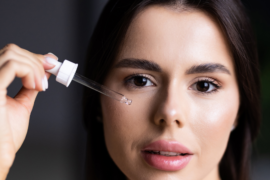Summer is coming, and those shorts are calling…but so are those stubborn saddlebags! Don’t worry, we’ve all been there. Feeling self-conscious about those pesky fat deposits on the outer thighs and hips can be frustrating, especially when you’re gearing up for beach season. So, how to get rid of saddlebags?
In this blog, we’ll dive into the root causes of saddlebags, debunking myths and providing you with science-backed strategies to tackle this common concern. From diet adjustments to targeted exercises and lifestyle changes, we’ll cover all the bases to ensure you have a well-rounded plan of action.
Imagine wearing your favorite pair of shorts or swimsuit, feeling confident and comfortable in your own skin. No more tugging or adjusting. With the right approach, those saddlebags will be a thing of the past, and you’ll be ready to embrace the warm weather with a newfound sense of body positivity.
So, let’s embark on this journey together. By the end of this guide, you’ll be armed with the knowledge and motivation to bid farewell to those stubborn saddlebags and embrace a healthier, happier you. Get ready to leave your insecurities and enjoy the summer-
What Causes Saddlebags?
Genetics, diet, exercise habits, and hormonal changes all can contribute to fat storage in the outer thighs.
1. Genetics
We have always seen that genetics play a major role in determining many things such as your hair texture, skin texture and also your body structure. If the fat accumulation has been in your genes since starting, then chances are you too will get it and as a result saddlebag.
2. Diet and Exercise Habits
Your diet has a major role in keeping your body in shape. A diet high in processed foods, sugary beverages, and unhealthy fats can contribute to overall weight gain, including the accumulation of fat in the saddlebag area.
Also, if you are not physically fit and active, then this lifestyle of yours can increase the problem of saddlebags.
3. Hormonal Changes
Many times hormones play role in controlling things. For example, if you are suffering from menopause, or certain medical conditions, it can lead to changes in body composition and fat distribution, resulting in fat storage around hips and thighs.
Strategies to Reduce Saddlebags
A. Diet
Adopting to a balanced and nutritious diet is crucial for overall weight management and fat reduction. Focus on consuming a variety of fruits, vegetables, whole grains, lean proteins, and healthy fats.
Limit your intake of processed foods, sugary drinks, and unhealthy fats, as these can contribute to weight gain and make it more difficult to lose fat in specific areas.
B. Exercise
To effectively target saddlebags and achieve overall fat loss, a well-rounded exercise routine combining cardiovascular exercises and targeted strength training is essential. Here’s a detailed exercise plan you can follow:
1. Cardio for Overall Fat Burning
Aim for at least 150-300 minutes of moderate-intensity cardio or 75-150 minutes of vigorous-intensity cardio per week, spread over 3-5 days. Some effective cardio options include:
- Brisk walking (30-60 minutes)
- Running or jogging (20-40 minutes)
- Cycling (30-60 minutes)
- Swimming (30-60 minutes)
- High-intensity interval training (HIIT) (20-30 minutes)
2. Strength Training Exercises for Hips and Thighs
Incorporate strength training exercises that target the muscles in the hip and thigh areas at least 2-3 times per week. Here are some effective exercises with detailed instructions and recommended repetitions:
- Squats (various variations)
- Stand with feet shoulder-width apart, toes slightly turned out.
- Engage your core and send your hips back as if sitting into a chair.
- Descend until your thighs are parallel to the ground (or as low as comfortable).
- Press through your heels to return to the starting position.
- Perform 3 sets of 12-15 repetitions.
b. Lunges (forward, reverse, and lateral)
- Stand with feet hip-width apart, engage your core.
- Step forward with one leg, lowering your body until both knees form 90-degree angles.
- Push back to the starting position and repeat on the other side.
- Perform 3 sets of 10-12 repetitions per leg.
- Repeat the same movement pattern for reverse and lateral lunges.
c. Hip Abductions
- Tie a resistance band around your thighs, just above your knees.
- Stand with feet shoulder-width apart, knees slightly bent.
- Keeping your toes pointed forward, step one leg out to the side against the resistance of the band.
- Return to the starting position and repeat on the other side.
- Perform 3 sets of 15-20 repetitions per leg.
d. Deadlifts
- Stand with feet hip-width apart, holding a barbell or dumbbells in front of your thighs.
- Engage your core and keep your back flat.
- Hinge at the hips, lowering the weights toward the floor, keeping them close to your body.
- Once you feel a stretch in your hamstrings, pause, and then drive through your heels to return to the starting position.
- Perform 3 sets of 10-12 repetitions.
Exercise Timetable
Here’s an example of a weekly exercise timetable that incorporates both cardio and strength training:
- Monday: Cardio (30-60 minutes)
- Tuesday: Strength Training (Squats, Lunges, Hip Abductions)
- Wednesday: Cardio (30-60 minutes)
- Thursday: Strength Training (Deadlifts, Hip Abductions)
- Friday: Cardio (30-60 minutes)
- Saturday: Rest or active recovery (e.g., yoga, stretching)
- Sunday: Rest or active recovery
C. Other Strategies
- Spot Reduction
While it is not entirely possible to target specific areas for fat loss, incorporating exercises that engage the muscles in the hips and thighs can help tone and sculpt these areas as overall body fat decreases.
2. Wearing Shapewear
Shapewear, such as compression garments or control tops, can temporarily smooth out the appearance of saddlebags. However, it is important to note that shapewear is a temporary solution and does not address the underlying issue of excess fat in these areas.
3. Considering Cosmetic Procedures
In some cases, individuals may consider cosmetic procedures, such as liposuction or body contouring treatments, to address stubborn fat deposits in the saddlebag area. However, these procedures should be considered a last resort and should only be undertaken after consulting with a qualified medical professional.
Importance of Consistency and Patience
The journey to bid farewell to stubborn saddlebags is a marathon, not a sprint. Consistency and patience are the keys that unlock the door to lasting success.
As the famous quote by Babe Ruth reminds us, “It’s hard to beat a person who never gives up”.
Losing fat, particularly in specific areas like the hips and thighs, is a process that demands unwavering commitment and a steadfast mindset. Maintaining a healthy lifestyle with a balanced diet and regular exercise routine is not a temporary fix but a lifelong investment in your well-being.
Quick fixes and extreme measures may promise instant gratification, but in the long term they can cause potential health damage. As the wise saying goes, “Slow and steady wins the race.” Embracing a sustainable approach that aligns with your unique needs and goals is the surest path to long-term success.
Patience is not merely a virtue but a powerful ally in your quest to reshape your body. As the ancient Chinese proverb reminds us, “The journey of a thousand miles begins with a single step.” Embrace the process, trust the journey, and allow your consistency and patience to pave the way to a healthier, more confident you.
Conclusion
Reducing saddlebags can be a challenging task, but it is achievable through a combination of a healthy diet, regular exercise (with a focus on cardio and targeted strength training), and patience. While spot reduction is not entirely possible, incorporating exercises that engage the muscles in the hips and thighs can help tone and sculpt these areas as overall body fat decreases.
It is important to remember that every individual’s body is unique, and what works for one person may not work for another. Consulting with a qualified healthcare professional or certified personal trainer can provide personalized guidance and ensure a safe and effective approach to achieving your desired results.
How do you get rid of saddlebags?










Comments are closed.